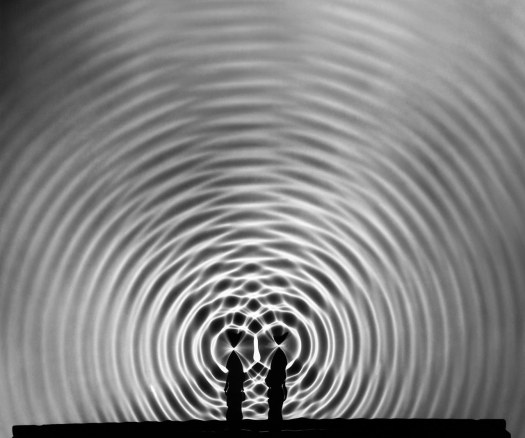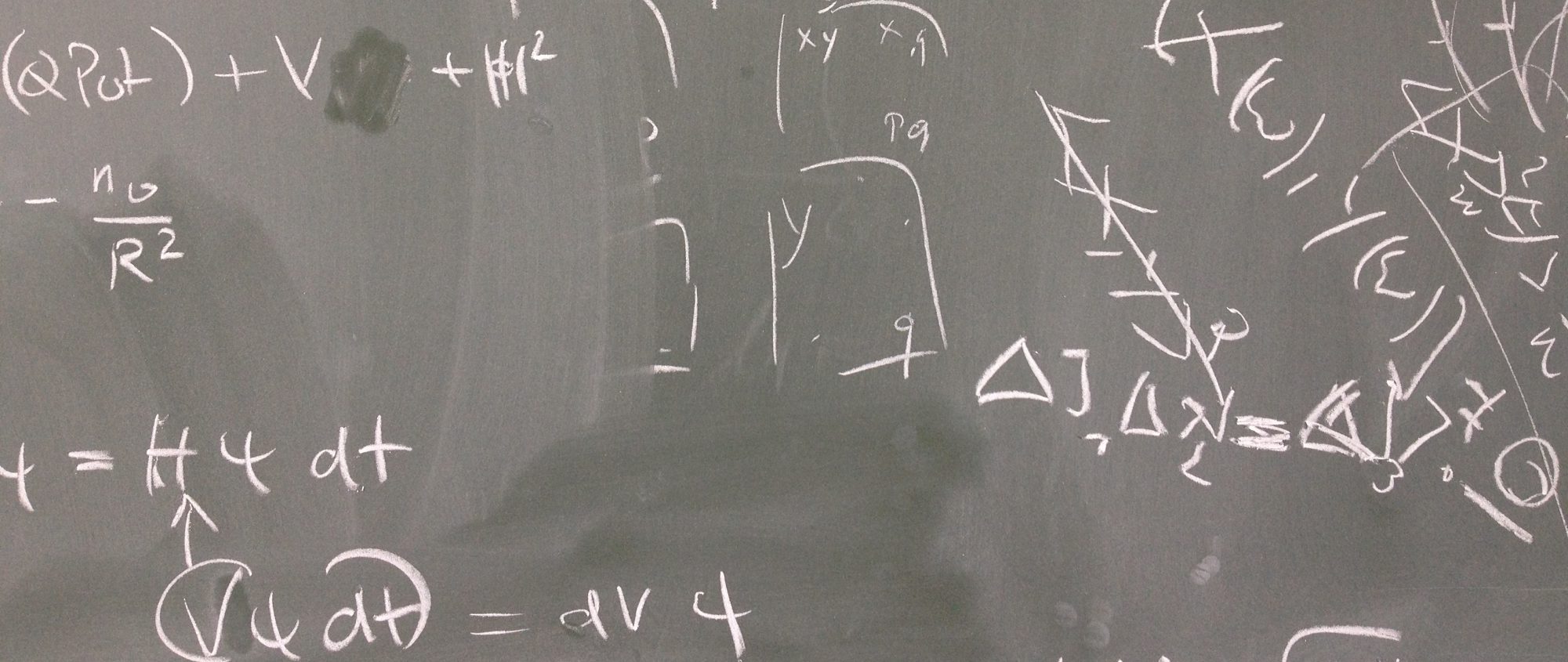27 Oct 2017 [notes by Gino W., Christian M., and Dennis M., expanded by C. Henkel]
— Remarks on Literature —
De Broglie: Nouvelles perspectives en microphysique
De Broglie was a key figure in building quantum physics: he proposed that a particle like an electron should also have wave aspects (the de Broglie wavelength), by analogy to a wave like the electromagnetic field that has particle aspects (photons). In the second half of his life, de Broglie developed an interpretation of quantum physics where the particle and the wave picture apply at the same time: in the so-called “pilot wave theory”, a pointlike particle appears as a kind of singularity embedded in a wave. The motion of the particle is governed by the wave.
Paul Arthur Schilpp: Albert Einstein als Philosoph und Naturforscher
Summary of Albert Einstein’s most important works, including his criticism of quantum theory and the discussion about it with other physicists.
Bernard d’Espagnat: A la recherche du réel
During the process of measuring a quantum mechanical system, the system does not reveal all its information. This kind of behaviour has led d’Espagnat to the concept of a “veiled reality”.
Roland Omnès: Comprendre la méchanique quantique
Tries to explain how we should understand quantum mechanics, especially with regards to the concept of “consistent histories”. This is an attempt to delineate in a precise way to which extent one can describe quantum mechanics with classical ideas and logical arguments.
Shimon Malin: Nature loves to hide
A book that takes up the idea of Dirac that “Nature makes a choice” when an experiment gives a result (quite often an unpredictable one for which quantum mechanics only provides a probability). Building on this process of choice and human experiences of a mystical kind, Malin develops the idea that Nature is “alive”.
Jérôme Ferrari: Le principe
Un roman sur la vie de Heisenberg qui présente le principe d’indétermination d’un point de vue philosophique. Une scène en particulier saisit de façon remarquable la situation de Heisenberg au point de refonder notre vision du monde microscopique. Heisenberg se trouve devant une “chambre à bulles” et voit des traces de particules alors qu’il est en train de se convaincre que des particules (des points matériels) n’existent pas. La solution lui vient quand il se rend compte que les traces sont en fait des séquences d’evènements séparés (des déclenchements de bulles qui se forment). C’est l’observateur qui les relie à la façon d’une trajectoire d’un point matériel. En fait, les bulles ne permettent pas de localiser le corpuscule quantique de façon précise. Ceci permet de reconcilier les traces avec l’inégalité de Heisenberg (le principe d’indétermination) qui interdit de connaître de façon précise à la fois la position et la vitesse.

Double-Slit Diffraction – a typical quantum Experiment
A double-slit experiment consists of a wave source (e.g. a source for water waves or a laser), a screen (e.g. a CCD-panel for a light source) and a barrier with two slits in between. Switching on the wave source, an interference pattern will occur on the screen.
 “Interference Pattern”, Berenice Abbott, taken from blog Brie Encounter
“Interference Pattern”, Berenice Abbott, taken from blog Brie Encounter
This only occurs however if a coherent source is used. The word coherent is not a well defined term. It is often described as the property of waves that they can interfere. If the light is not coherent, the result on the screen will just be the sum of the intensities of the two waves that originate at the the slits. In between incoherent and coherent, waves can also be partially coherent. This results in the sum of the two wave intensities combined with an interference pattern or, equivalent, interference with a smaller contrast between bright and dark fringes.
If one wants to observe interference, the coherence length has to be large enough compared to the distance between the two slits. For natural sunlight, the question arises whether it is possible to achieve interference. Because of the coherence length of a few micrometers, the distance between the two slits would have to be very small.
Additionally, the angular distribution is of importance. One needs an angular distribution that is as small as possible. Because of this it is possible to observe interference effects of stars because they can be viewed as point-shaped light sources. Conversely, it is possible to measure the angular diameter of stars by exploiting the loss of coherence as two slits are moved apart (Hanbury Brown–Twiss experiment).
If the experiment is conducted with low-intensity light, wave-particle duality can be observed. The low-intensity light can be understood as an experiment with single photons, which interfere with themselves after passing through the slits. The screen (CCD-panel) records the single incidents that happen. Summed up this will show the same interference pattern observed with high-intensity light. This setup (with electrons) has been voted the “most beautiful experiment in physics”.
Besides looking at light interference, it is also possible to demonstrate wave-particle duality with electrons or even with relatively large molecules. In 1999 M. Arndt et al. showed interference with the fullerenes C60 and C70 using a material absorption grating [1]. They reproduced the results two years later using a light grating [2]. With a so called Kapitza-Dirac-Talbot-Lau (KDTL) interference experiment the group of M. Arndt demonstrated the quantum wave nature of even larger molecules, compounds composed of up to 430 atoms [3]. Recent experiments of the group exceeded this number again [4,5].
Question
I have read that double-slit diffraction illustrates the wave-particle dualism in the following way: if one slit is closed, the interference pattern vanishes and the outcome corresponds to what one would expect from particle-like behaviour. If both slits are open, interference happens and shows wave-like behaviour.
How would you reconcile this picture with the fact that in both cases, “individual particles” are detected? And that at a single slit, diffraction (a wave phenomenon) also happens, just slightly less spectacular?
References
[1] M. Arndt et al., Wave–particle duality of C60 molecules, Nature 41, 680-682 (1999)
[2] O. Nairz et al., Diffraction of complex molecules by structures made of light, Phys. Rev. Lett. 87, 160401 (2001)
[3] S. Gerlich et al., Quantum interference of large organic molecules, Nature Commun. 2, 263 (2011)
[4] Th. Juffmann et al., Real-time single-molecule imaging of quantum interference, Nature Nanotech. 7, 297 (2012)
[5] S. Eibenberger et al., Matter–wave interference of particles selected from a molecular library with masses exceeding 10 000 amu, Phys. Chem. Chem. Phys. 15, 14696-700 (2013)


One Reply to “Lecture 2: Double Slit Diffraction”